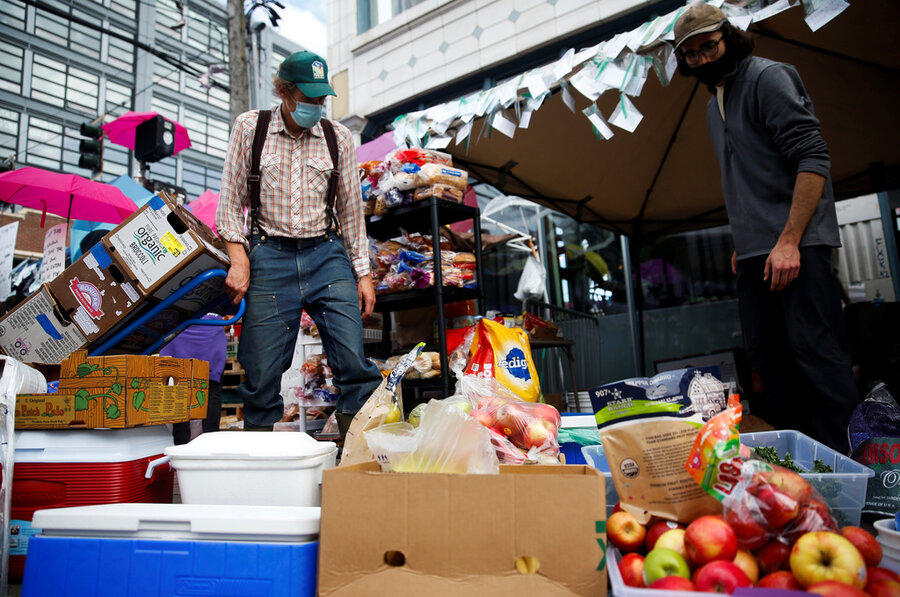Seattle's other lesson in safety
Loading...
Protesters in Seattle have turned the city’s Capitol Hill neighborhood into a “cop-free zone,” forcing police officers to vacate their East Precinct building. After the recent killing of two black men by police in the United States, this is a novel attempt to redefine security for a community. Eventually the city will sort out a new role for its police, and protesters will end their “watch patrols.” But one aspect of the experiment should not end.
Citizens in the zone, dubbed Capitol Hill Occupy Protest, are realizing that safety also lies in providing for others. They have set up shelters and a community garden. They are picking up trash. Most of all they are donating food, water, and health supplies, especially face masks.
“You have people of all races coming in and helping,” one health care worker told the Monitor. “They just want to give something, anything to the cause. It’s a beautiful thing.”
This burst of neighborly generosity in the name of social justice fits a new nationwide poll. A survey by the group Cause and Social Influence found 20% of 18- to 30-year-olds have made a donation to address racial inequality, discrimination, or social injustice. The poll was taken soon after the killing of George Floyd in Minneapolis. That level of giving is nearly double found in other surveys in recent years. The giving was also the same across racial groups.
Young people are shaking up old patterns of giving in the U.S. They define giving broadly to include volunteering and peer-to-peer advocacy, says Laura MacDonald, vice chair of the Giving USA Foundation. They are less loyal to nonprofit institutions and more loyal to a cause.
The shift is not only among young people. Since the pandemic began, those wealthy Americans who have parked money in nonprofit financial institutions called donor-assisted funds have increased giving by 30% to 50%, according to Bloomberg News. The money is helping people such as health care providers and laid-off workers dependent on food banks.
Given the events of 2020, giving may never be quite the same. The U.S. in particular is coping with a pandemic, a recession, and now a mass movement for social justice. The good news is that charities entered the year after receiving in 2019 the second highest level of donations on record. Adjusted for inflation, the amount was $449.64 billion, according to Giving USA.
The giving environment is very dynamic right now, says Ms. MacDonald. Indeed in Seattle, the new dynamics of generosity are playing out in one neighborhood. In the end, giving is about providing a safe and secure life for each other.





